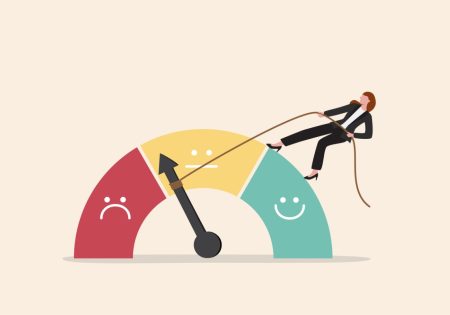Never miss a story — sign up for PLANADVISER newsletters to keep up on the latest retirement plan adviser news.
Investors Brace for a Bumpy Ride
Investors believe more market volatility is in store, with a majority saying they expect the market to be volatile in the New Year, according to the latest Wells Fargo Investor and Retirement Optimism Index survey.
Three-quarters of those surveyed say the stock market will be rocky, including 16% who predict it will be highly volatile. Of those who anticipate market volatility, six in 10 (59%) are taking action to prepare by: consulting with a financial adviser (44%), purchasing stocks to take advantage of lower prices (30%) and selling stocks to protect from further losses (15%).
The Investor and Retirement Optimism Index held its ground in the fourth quarter, at +59, similar to +58 in the third quarter. Optimism has been slightly weaker in the past two quarters compared to the first half of the year when the index hovered near +70, but it is still higher than the +48 recorded a year ago. Despite overall stability in the index this quarter, retiree optimism dropped 23 points, to +47, driven by a loss of confidence in retirees attaining their five-year investment goals, and reduced confidence in economic growth and inflation. At the same time, non-retiree optimism rose 10 points, to +63, because of improved confidence around employment. This marks the first time in more than a year that non-retired investors are significantly more optimistic about the investment climate than retirees.
Market bumps make it even more important that investors have a strong financial plan to keep them on track with goals and risk tolerance, says Zar Toolan, director of advice quality for Wells Fargo Advisers.
Financial advice is particularly important, according to the survey, and investors continue to rely on different ways to get it. Nearly half (45%) use a dedicated personal financial adviser. About a third (39%) use an advisory that gives access to a call center so they can speak with a live adviser. Another third (29%) rely on a friend or family member, and 22% turn to the Internet for an online financial planning or investing website. During the market volatility in late August, a third of stock investors (33%) consulted with a financial adviser.
NEXT: The need for advice in a volatile marketThere are a lot of different ways to get financial advice today, but no matter how it’s delivered, its true value lies in making sure investors have a financial plan, regularly monitored by a financial adviser, to help meet investment goals. A plan that is in line with an investor’s goals and risk tolerance makes that investor better equipped to weather the volatility, Toolan says.
During the recent volatility, investors who use a dedicated financial adviser were likelier to:
- Say they paid closer attention than usual to the market (57% versus 46%);
- Sell stocks (23% versus 10%);
- Buy stocks (40% versus 18%); and
- Generally follow all or most of the advice from the adviser (78%).
When asked how much their portfolio matches their risk tolerance, the majority of investors (73%) say their investments have the right amount of risk for them. Of the rest, four times as many feel they could handle more risk (20%) than say they have too much (5%).
“Market volatility can be tough for investors. While most told us their investments match their risk, financial advisers often find out when they talk to clients that the match hasn’t held up well when the market fluctuated,” Toolan says. This disconnect underscores the importance of client conversations, especially during volatile markets, in helping investors stay on track to achieve their long-term financial goals.
“During times of uncertainty, investors’ attitudes and goals can change as quickly as their portfolios,” Toolan says. “This downward shift in retiree optimism highlights their concerns about reaching their near-term financial goals.”
The Wells Fargo/Gallup Investor and Retirement Optimism Index was conducted by phone from October 30 to November 8, surveying 1,018 investors randomly selected from across the country. The American investor is an adult in a household with total savings and investments of at least $10,000—about two in five American households. Respondents were non-retired (73%) and retirees (27%). Of total respondents, 42% reported annual income of less than $90,000 and 58% of $90,000 or more.
You Might Also Like:

More Than Half of Plan Advisers Expect to Use AI

Vanguard to Lower Asset Minimum for Digital Adviser Access


